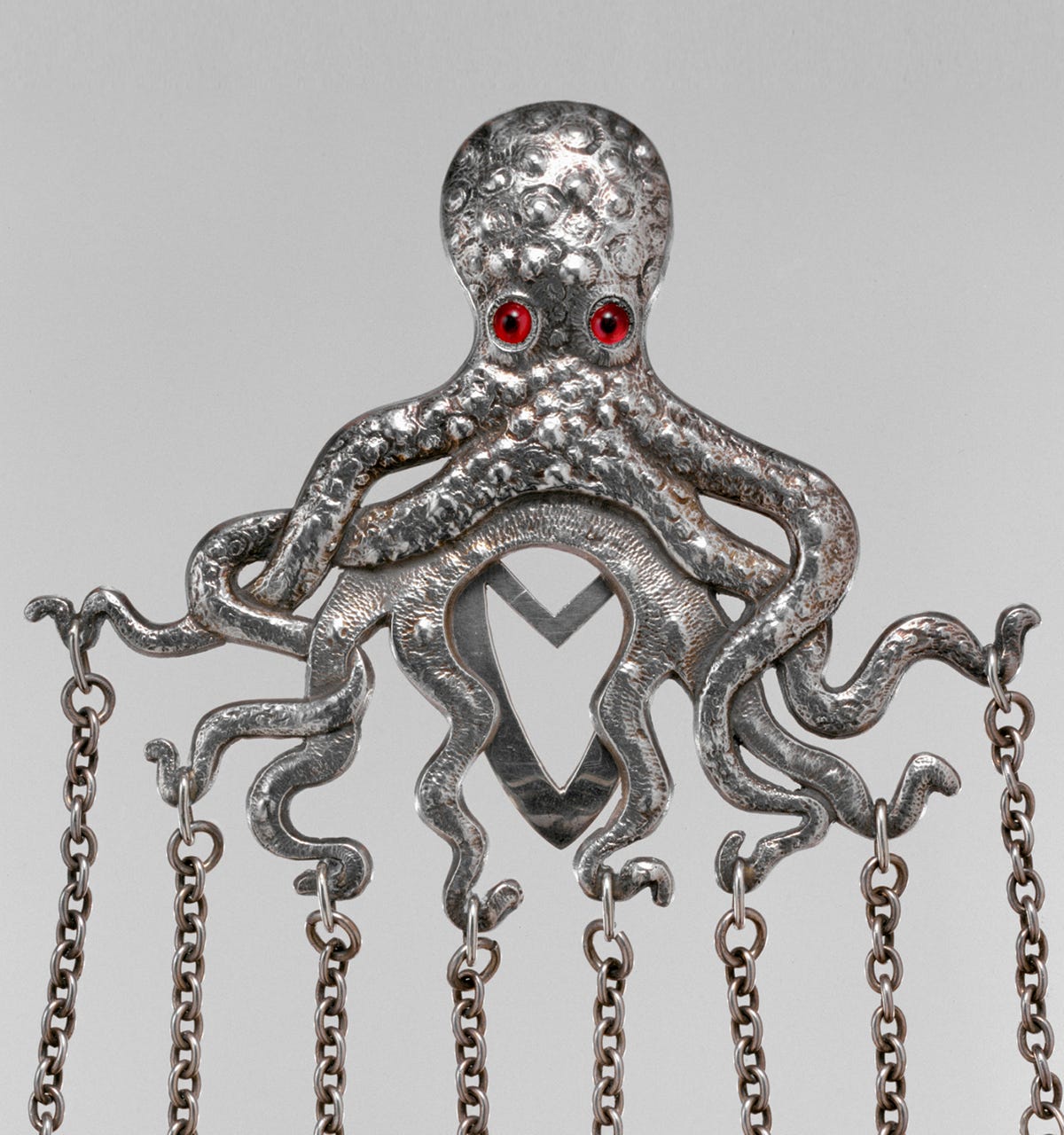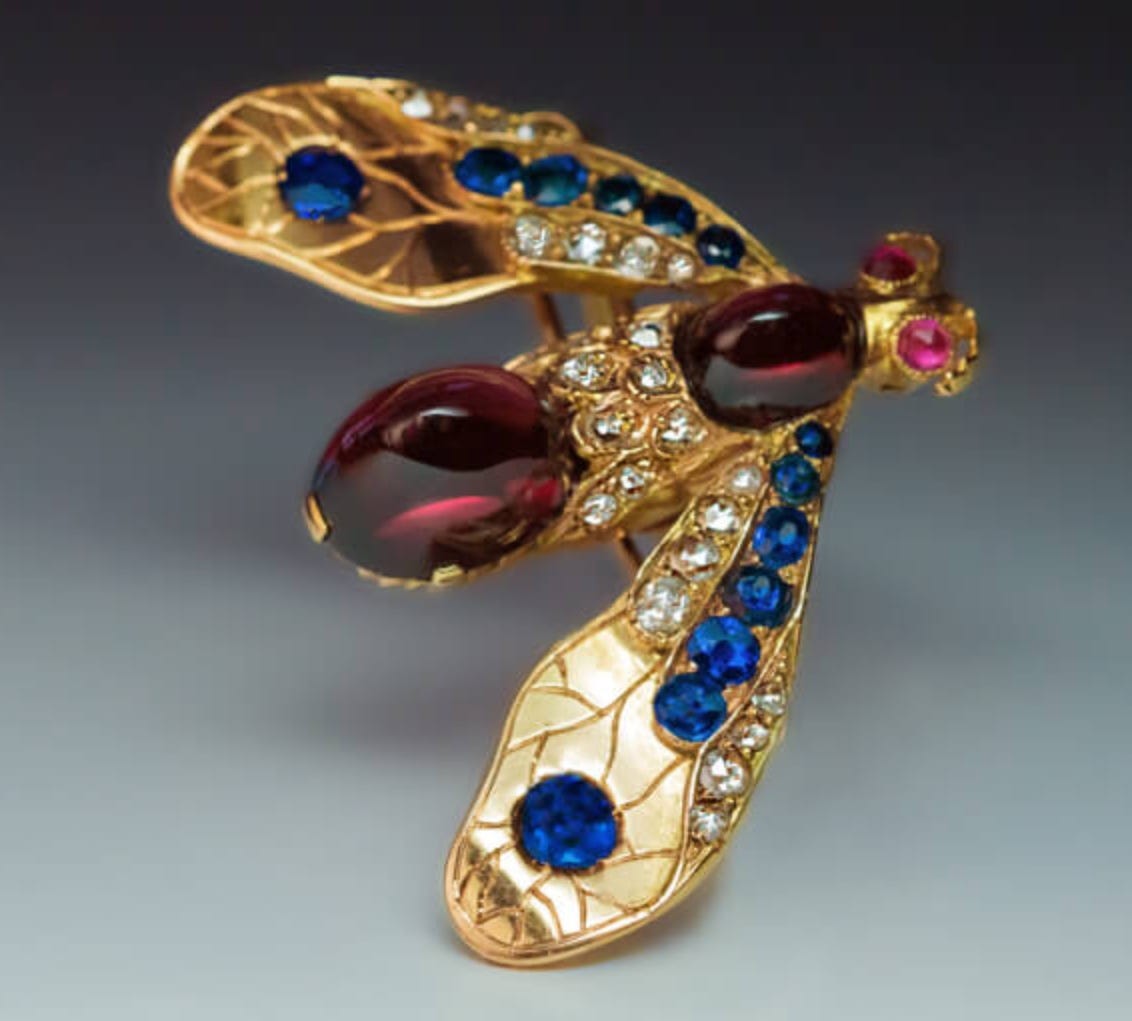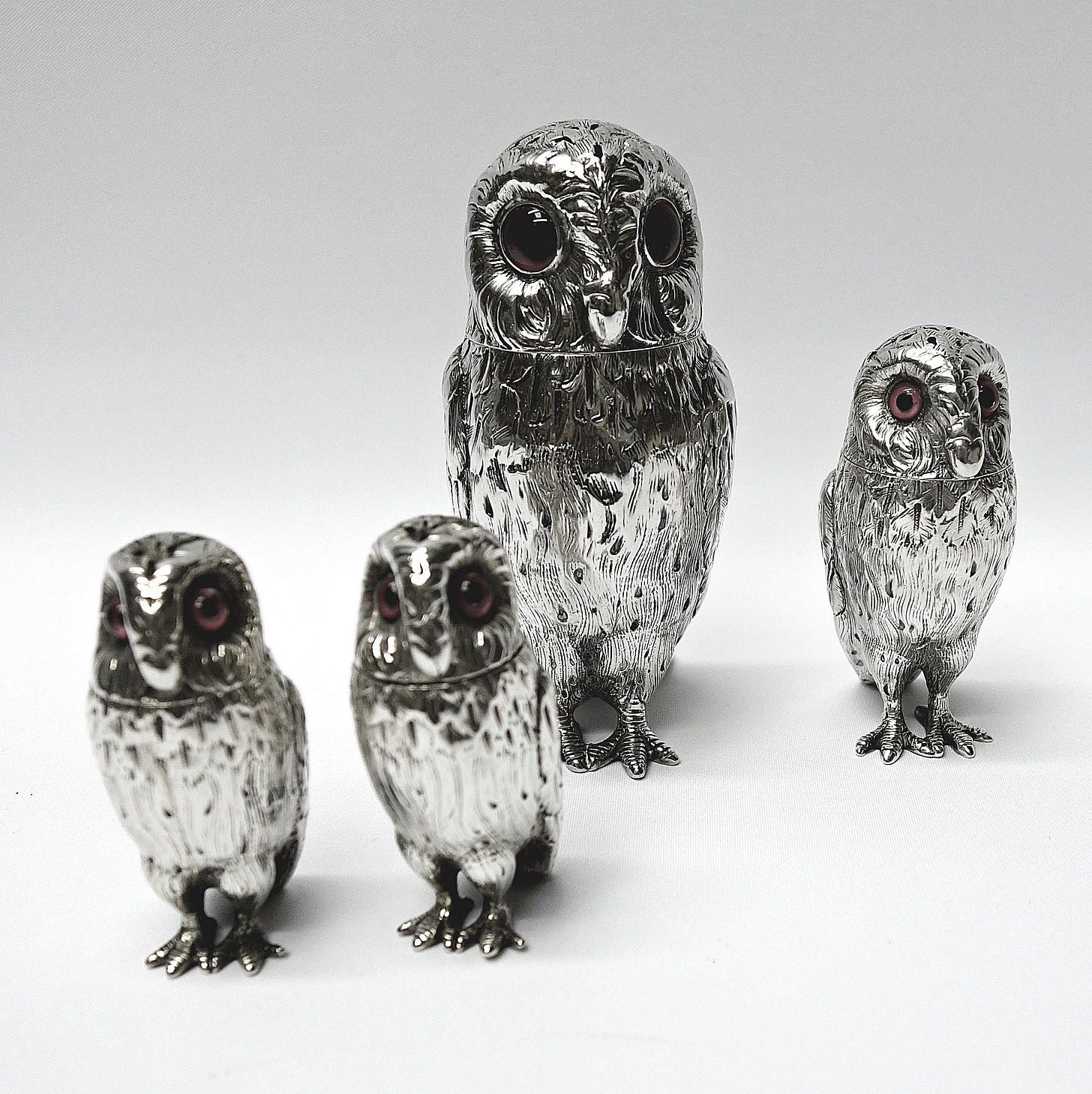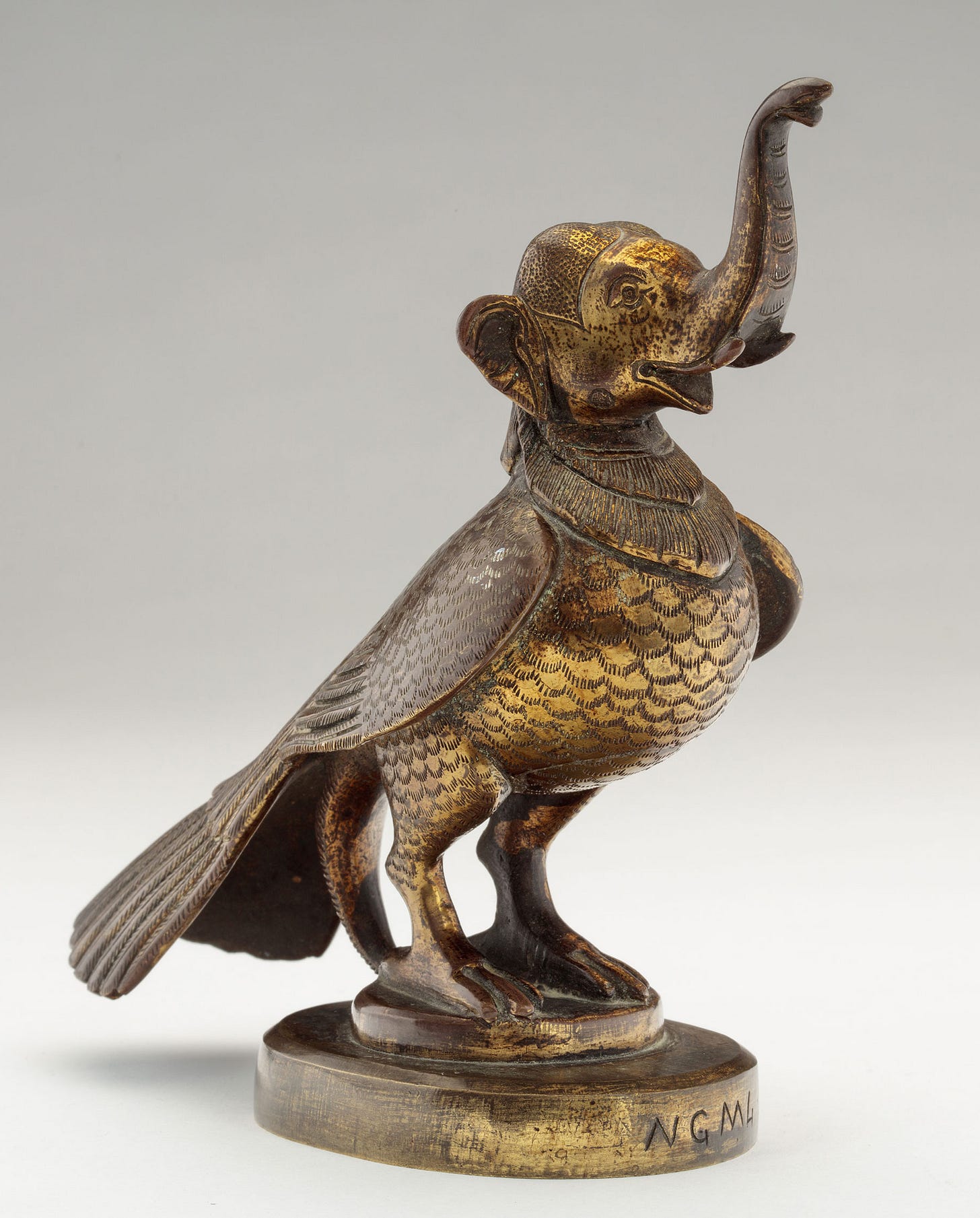
This Gorham octopus chatelaine is included in the “Jewelry for America” exhibit that recently opened at New York’s Metropolitan Museum of Art. Chatelaines, which are essentially a central pin or clip with various hanging attachments, were a way for women — who have historically been denied pockets — to keep their essential everyday tools close at hand. Scissors, pencils, pincushions, watches, and perfume bottles were all in heavy rotation on many chatelaines, variations of which go back centuries. Women of all classes used them, and, because the attachments were so easily swapped out, they could be highly personalized. There were chatelaines for nurses, needleworkers, painters and various other specialities, with some made in base metals, and others — many of them created by the great jewelers of the time — that were clearly meant for show. They’re a fascinating subject, and I highly recommend this Collectors Weekly interview with Genevieve Cummins, who literally wrote the book on chatelaines.

The Met’s version (above left), in sterling and hallmarked for 1887, doesn’t have any of its attachments. Another version of this chatelaine (above right) sold at auction in Connecticut in 2012, and that one — which sold well above estimate for $10k — is listed as containing all the original attachments from Gorham: A match case, nail file/buttonhook, vinaigrette/perfume bottle, walnut- or pecan-shaped case, calendar with ivory pages, circular pin cushion, writing pencil and scissors. Except for the nut and pencil, they all feature an undersea motif complete with fish, crabs and seashells.
The Missouri Historical Society also has one of these chatelaines, but theirs is sadly missing an eye, and some of the attachments — which include a compact, perfume bottle, mirror, whistle, and pin holder — may be later additions, since only two of them appear to have an undersea theme.

Insect jewelry was extremely popular in the 19th century. The Victorians were obsessed with studying the natural world, and that interest presented in jewelry as well. Spiders, beetles and butterflies were ideal subjects for designs that showcased brightly-colored gemstones and precious metals, and this 14k flying bee (or moth?) brooch is a particularly nice example. Dating to between 1882-1898, it’s hallmarked for St. Petersburg, Russia, and features ruby eyes and a body of cabochon-cut garnets and rose-cut diamonds, with sapphires and diamonds lining the wings.

A delightful set of sterling silver owl condiments, with chased feather detail and glass button eyes. The set consists of one large sugar caster, one salt shaker and two small pepper shakers. Hallmarks tell us they were made by London silversmith Charles Edward Brown, and the caster dates to 1867, the salt to 1870, and the peppers to 1871. The set was retailed by Asprey and retains its original fitted box.

Circa 1900s, a particularly beautiful hinged snake bangle in 18k yellow gold with ornate scrollwork on a bed of blue enamel that winds its way around the body of the snake. A pear-shaped garnet surrounded by rose-cut diamonds crowns the head, and 15 opals are set down the snake’s back.

I have no idea what’s going on here, but I like it. This cheerful 19th century elephant/parrot hybrid creature is made of brass and stands around 6” high. It’s from South India, and I’ve done some rooting around and there’s a creature in Thai Buddhist mythology called the Nok Hussadee, which has the body of a bird and the head of an elephant. It’s one of many fantastical animals that live in the mythological Himmapan Forest, which, according to legend, sits in the Himalayas on the border of India and Nepal. I don’t know if that’s who this little guy is — the Nok Hussadee sounds pretty fierce — but I love him.

In this installment of Ridiculous Dog Faces in Jewelry, we have a French 18k gold and enamel brooch, circa 1875, that features a sensitive portrait of a greyhound who spends too much time on Twitter.
Ok, that’s it for this week’s unexpectedly zoological edition. Have a good day, everyone! xxx



